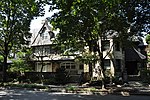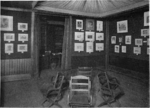Englewood Avenue station
Green Line (MBTA) stationsMassachusetts Bay Transportation Authority stubsMassachusetts railway station stubsPages with no open date in Infobox stationRailway stations in Brookline, Massachusetts ... and 1 more
Tram stubs

Englewood Avenue station is a light rail station on the MBTA Green Line C branch located in the median of Beacon Street just west of Englewood Avenue in Brookline, Massachusetts. The station consists of two low side platforms which serve the C branch's two tracks. Englewood Avenue is not accessible. Track work in 2018–19, which included replacement of platform edges at several stops, triggered requirements for accessibility modifications at those stops. By December 2022, design for Englewood Avenue and seven other C Branch stations was 15% complete, with construction expected to take place in 2024.
Excerpt from the Wikipedia article Englewood Avenue station (License: CC BY-SA 3.0, Authors, Images).Englewood Avenue station
Beacon Street,
Geographical coordinates (GPS) Address Nearby Places Show on map
Geographical coordinates (GPS)
| Latitude | Longitude |
|---|---|
| N 42.337049 ° | E -71.145357 ° |
Address
Outbound
Beacon Street
02447
Massachusetts, United States
Open on Google Maps








